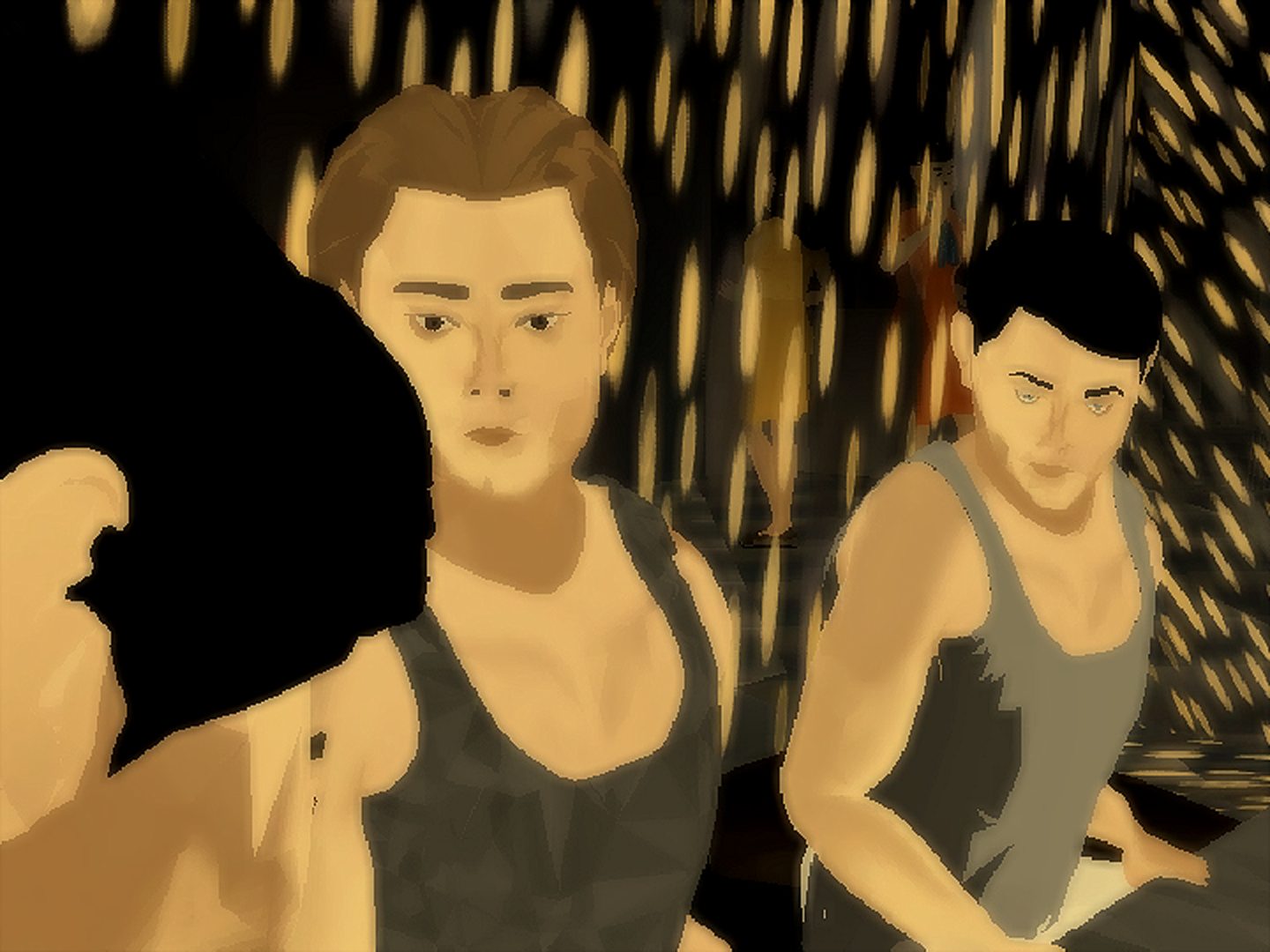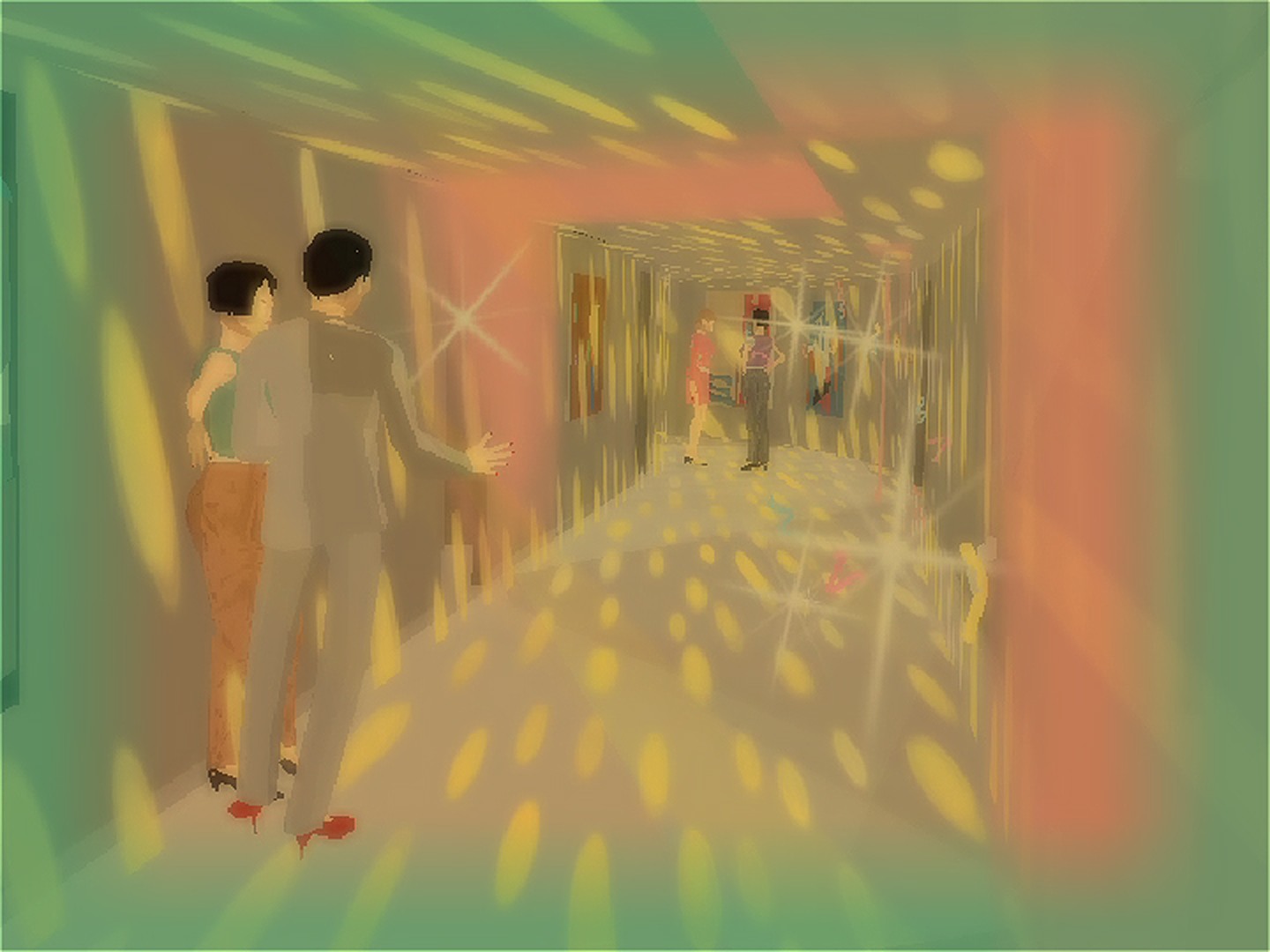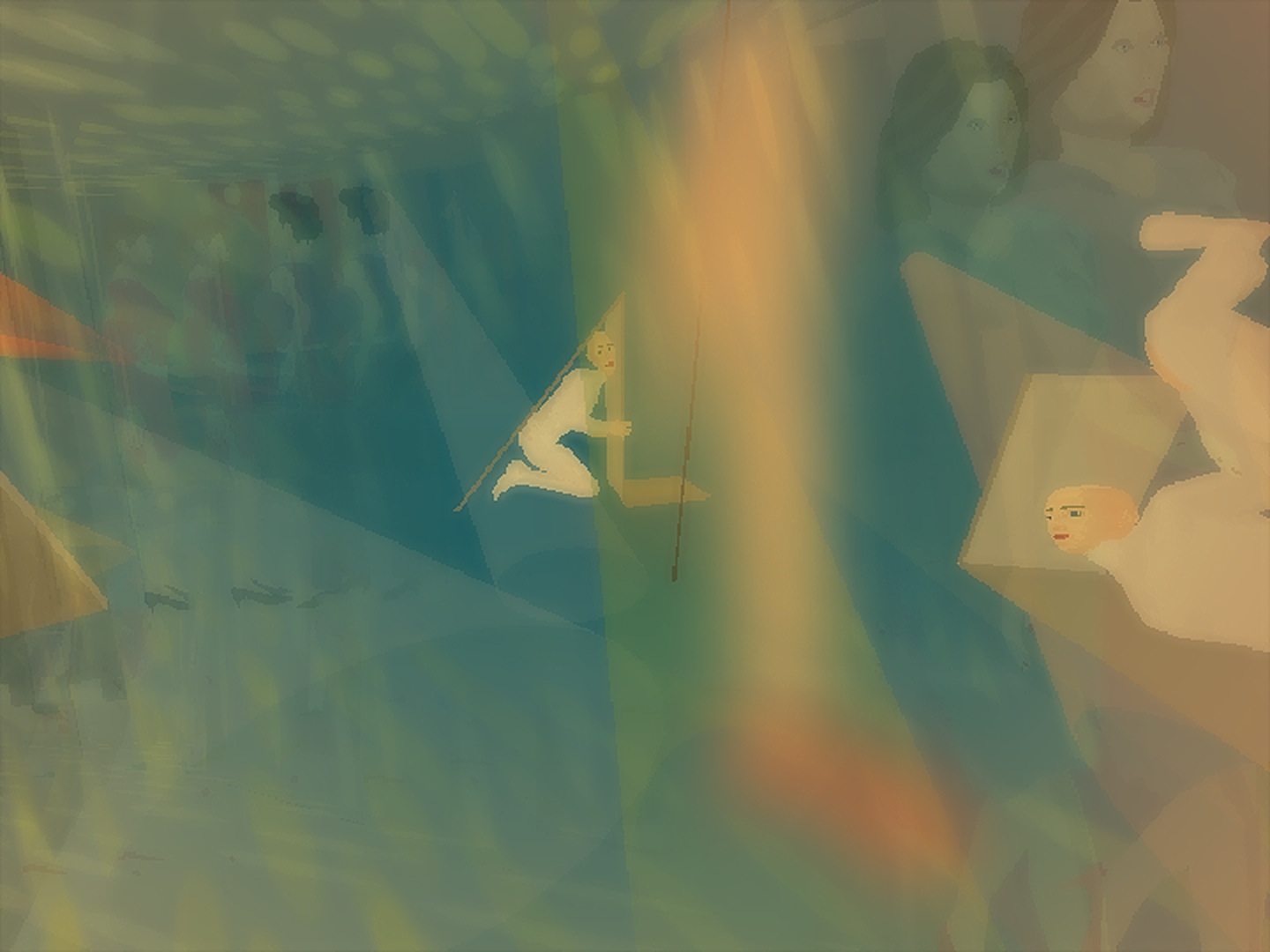Part of Winter 2013
Pleasure Dome and Vtape are pleased to co-present the Toronto premiere of Barry Doupé’s most recent feature-length animated film. The Colors That Combine To Make White Are Important (119 minutes, 2012) explores the power structure within a failing Japanese glass factory. Doupé’s characters rapidly evolve through three distinct acts, subverting the dominant archetypes and corporate hierarchies in the Japanese salaryman genre to examine language, art and expression. Alluding to the office comedy 9 to 5 (1980), Yasujiro Ozu’s staid, heartwarming Good Morning (1959) and Luchino Visconti’s sexually-charged finale in Death in Venice (1971), Colors shifts between cultural reference points, flattening them out into a dialogue of desperate, over-reaching thoughts and searching inquiries about nature, love, mortality and consciousness.
1:23 min Clip from The Colors That Combine To Make White Are Important > http://www.barrydoupe.ca/ImportantColorsClip01.html
Barry Doupé (b. 1982 Victoria, BC) is a Vancouver based artist primarily working with computer animation. He graduated from the Emily Carr University in 2004 with a Bachelor of Media Arts majoring in animation. His films use imagery and language derived from the subconscious; developed through writing exercises and automatic drawing. He often creates settings within which a characters’ self-expression or action is challenged and thwarted, resulting in comic, violent and poetic spectacles. He is a member of The Lions collaborative drawing group. His films have been screened throughout Canada and Internationally including the Ann Arbor Film Festival, International Film Festival Rotterdam, Anthology Film Archives, Lyon Contemporary Art Museum, Pleasure Dome, MOCCA, Whitechapel Gallery, and the Tate Modern. His first feature-length film Ponytail premiered with Pleasure Dome in 2008. His previous titles include A Boy on a Dock Blowing His Nose (2004, 15:43), Distraught Mother Reunites with Her Children (2005, 24:30 min.), At the Heart of a Sparrow (2006, 29 min.), Thalé (2009, 5 min.), Whose Toes (2009, 33 min.), Ponytail (2008, 92 min.), Shikisou (with Yota Kobayashi, 2012, 11 min.) and Whaty (2012, 30 sec. loop).
www.barrydoupe.ca
Making sense with experimental animator Barry Doupé
Interview with Ben Sachs
Published in the Bleader 06.22.12
www.chicagoreader.com
The colors that combine to make white are important, and so is combatting sexism. I’ve gotten stuck whenever I’ve tried to tell my friends about Barry Doupé’s The Colors That Combine to Make White Are Important, …a deliberately artificial-looking computer-animated feature set mainly in a Japanese office and filled with hilarious non sequiturs (“I made miniature versions of giant sandwiches; they are the same size as regular sandwiches”), it sometimes suggests an Adult Swim program in its warped sensibility. But Doupé’s dialogue is much headier than anything on TV, with considerations of gender inequality, modern art, and existentialism peeking through the strange humor. The movie also concludes, daringly, with a 45-minute sex scene during which one of the characters (a strong-willed secretary and art thief named Leena) delivers a stream-of-conscious monologue about everything and nothing.
I contacted Doupé earlier this week to find out just who in the hell creates such a film.
Ben Sachs: So, my roommates and I watched your movie the other night, and we agreed it was one of the strangest things any of us had ever seen—in movies or in life.
Barry Doupé: Uh . . . thanks!
Were you hoping to produce that kind of response?
It’s hard for me to say what other people are going to take from [the movie]. I wanted to make a film that I would find interesting. I don’t know if it was intentional for it to be strange.
Where did some of the ideas for this film come from?
I had made a feature film before, Ponytail, in 2008, and from there I made a couple of shorts. I wanted to see what I liked about making all of those and either expand on [the ideas in] them or change my approach. In Ponytail, everything was really bold and fragmented; it was weird at the start, the middle, and the end. I thought it would be interesting to do something that wasn’t weird until a certain point . . . I was also thinking about the film 9 to 5. That’s an office comedy, but it’s also looking at feminism and issues of gender inequality. I was also just interested in the office environment. It’s an unusual space, with all these interconnected rooms and phones that connect between rooms . . . even the way they’re decorated appealed to me. So, I wanted to do something [set] in an office. And I thought about the [Yasujiro] Ozu comedy Good Morning.
A lot of Ozu’s movies have scenes in offices.
And I like the way his characters talk and move and everything.
Is that what inspired you to set the film in Japan?
I was inspired by a few things. When I was making Ponytail, I was using this text-to-speech program to do the voices, and I found that the Japanese voices were very melodic. There’s a rhythm in them that I really liked—sort of a muted power, very delicate—so I wanted to do something with them. You know, I wanted to hear what it would be like to express something complex or horrible in these nice voices.
Another big influence on the movie was the Visconti film of Death in Venice. Like, the main character has this moment on the beach that’s very profound. It changes him internally. And so [Leena] has a very powerful moment like that.
Are all the characters in the film voiced by this text-to-voice program?
Yeah, they are. Cepstral is the name of the program that I used. It’s kind of funny: there are three voices in the film, and one of them has just been discontinued [by the program].
Did anyone besides you work on the film?
No, it was just me.
Did you start to feel lonely or cooped-up when you were making it?
No, I really liked it. In other things I do, I collaborate. But since a [feature-length] movie is such a huge undertaking—and since I’m pretty impatient when I work—I have a hard time working with other people. Also, I don’t know a lot of people who know how to use the 3D software [that I animate with]. So, it’s easier for me to collaborate on pencil-and-paper drawing or on writing, which don’t need so much technical know-how and aren’t so overwhelming. Like, this film took two years to make. It’s hard to find people that I can trust for that long.
When did you get into 3D animation?
I got an animation degree from Emily Carr University [in Vancouver], and I was introduced to the software there. I’d been more interested in hand-drawn [animation], and I even did that throughout school. But there were some required classes in computer animation, so I took them. I started to get into it then, but I never really saw any 3D work that I was interested in. I didn’t like the way things moved; it felt hollow. But as I was working with it, I found that it was really efficient compared to hand-drawn [animation]. My first [hand-drawn] film was 16 minutes long and it took me a year and a half to make. I couldn’t keep up with my ideas in that format.
Are the characters in Colors based on real people or did they come out of your imagination?
Some of each. I created about 50 or 60 characters, doing their hair, makeup, and faces, and then I “cast” the movie from them. I took the ones who stood out to me. Like, Leena ended up having a really complicated face: she had something that drew you in. For the boss character, I found someone who could look angry but also seem quite tender [ed: he spends about 45 minutes of the movie sodomizing one of his employees]. I wanted to have characters who were expressive. There wasn’t much expression in my first film, apart from blinking; that was something I wanted to work on. There’s some subtle smiling in this one.
To get back to the writing process, did you know how the film would end when you started writing it?
I had some idea in the back of my mind, but the writing was quite free. I knew that I wanted a structure that would provide some contrast—like, something important would important would happen that would shift the way you perceive a small chunk of time. I planned to work in a different way—I kind of planned not to plan for certain sections.
Did you ever surprise yourself in the process?
I felt like, when I was animating, that the script was like a radio play. There wasn’t any reason for the people to move . . . but there were pauses to it that made it different than, like, reading a book. I was surprised by how moving I thought it was. Like, there’s all this artificial stuff—the voices, the computer animation—but I felt like Leena, as a character, really moved me. She has more power than I expected . . .There’s a line where she says, “You can’t hold back the ocean with a fork.” And when I was making the final scene, I wondered what that would be like if I created this ocean of thought, to put out every little thing that crosses my mind in real time. It would be really hard to keep up with my thoughts! And that’s what Leena’s trying to do.



